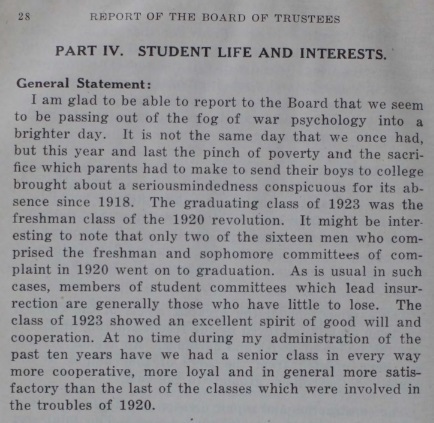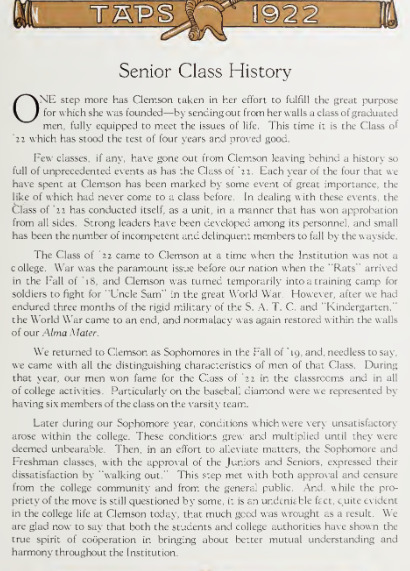Legacy
The 1924 walkout was the final walkout at Clemson. Although a sizable protest, the 1924 walkout seemed to be more of an aberration, an isolated incident of pure class solidarity. The walkout of 1920, on the other hand, appears to have been deemed a productive success by all actors involved. In the 1922 edition of "Taps," the seniors (members of the sophomore class during the 1920 walkout) looked back on their protest with reverence. They viewed the walkout as an effective coalescence of the entire Clemson community for the betterment of the College. President Riggs spoke in the same tenor in his 1922 annual report to the Board of Trustees. He stated the The State newspaper had lauded Clemson for its creation of the Department of Student Affairs and encouraged other South Carolina institutions to follow suit. The following year, President Riggs hailed the 1923 class as "in every way more cooperative, more loyal and in general more satisfactory than the last of classes which were involved in the troubles of 1920."
The students' activism of 1920 resulted in improved mess hall conditions, disciplinary reform, and, most significantly, a Department of Student Affairs that offered a concrete avenue for student advocacy and fostered the "welfare and behavior of students" (Hevel 847). In this regard, Clemson's institution of the Department of Student Affairs was a pinnacle moment in the institution's history because it indicates the school's commitment to the well-being of its students. As President Riggs surmised, "we seem to be passing out of the fog of war psychology and into a brighter day." The activism in the early part of the decade helped usher in this brighter day at Clemson and provided future Tigers with an enhanced level of advocacy and agency, eliminating the need for such drastic protest movements.


